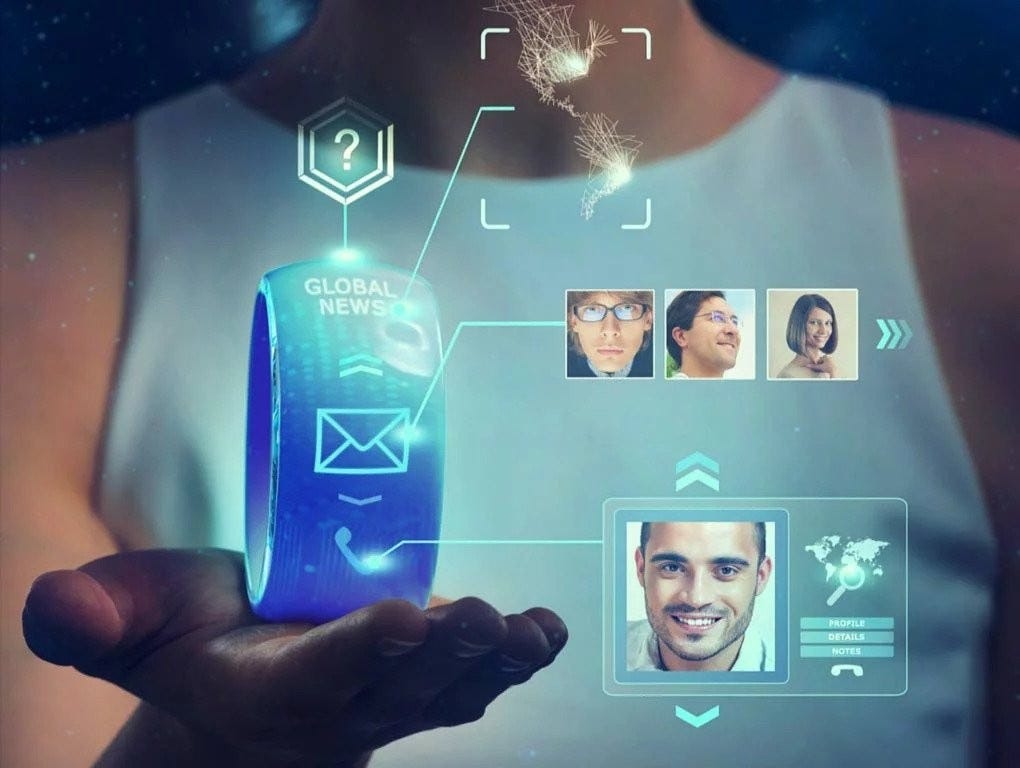Wearable technology has witnessed remarkable growth and innovation in recent years, transforming the way we interact with and benefit from personal devices. From fitness trackers and smartwatches to augmented reality glasses, the next generation of wearable tech is poised to redefine our daily lives. In this article, we’ll explore the latest advancements and trends in wearable technology, shedding light on how these devices are becoming an integral part of our digital ecosystem.
Evolving Form Factors
Smartwatches Reinvented
Smartwatches have evolved beyond basic notifications and fitness tracking. Modern smartwatches are now equipped with advanced health monitoring features, such as ECG sensors, blood oxygen level measurement, and sleep tracking. They also offer seamless integration with smartphones, enabling users to make calls, reply to messages, and even use apps directly from their wrists.
Smart Clothing
The concept of smart clothing is gaining traction, with garments embedded with sensors and technology to monitor various health metrics. Smart shirts, sports bras, and even socks can track heart rate, body temperature, and posture, providing valuable data for fitness enthusiasts and healthcare professionals alike.
Health and Wellness Monitoring
Continuous Health Tracking
Wearable devices are becoming essential tools for monitoring personal health. They can continuously track vital signs, detect irregularities, and provide valuable insights to users and healthcare providers. Wearables are playing a crucial role in early disease detection and chronic condition management.
Mental Health Focus
The next generation of wearables is also addressing mental health. Devices equipped with biosensors can measure stress levels, monitor sleep patterns, and provide relaxation exercises or interventions when stress is detected. These innovations are helping individuals manage their mental well-being effectively.
Augmented Reality (AR) and Virtual Reality (VR)
AR Glasses
Augmented reality glasses are entering the consumer market, offering hands-free access to information and digital experiences. AR glasses overlay digital content onto the real world, making them valuable tools for tasks ranging from navigation and remote assistance to gaming and education.
VR Headsets
Virtual reality headsets are becoming more accessible and immersive. They are used not only for gaming but also for training, education, and virtual tourism. Improved graphics, motion tracking, and haptic feedback provide more realistic and engaging VR experiences.
Assistive and Productivity Tools
Accessibility Wearables
Wearable technology is making strides in improving accessibility for individuals with disabilities. Devices like smart glasses with speech recognition and haptic feedback can assist the visually impaired in navigation and daily tasks. Wearables are also used in sign language interpretation and communication aids for the hearing impaired.
Productivity Enhancements
Wearables are boosting productivity in various industries. In manufacturing, workers can use smart glasses to access assembly instructions and receive real-time guidance. In logistics, wearable scanners and augmented reality displays are streamlining inventory management and order fulfillment.
Challenges and Considerations
While wearable technology holds immense promise, it faces several challenges, including:
Privacy Concerns
Wearable devices collect a vast amount of personal data, raising privacy and security concerns. Users and manufacturers must be vigilant in safeguarding this sensitive information against breaches and misuse.
Battery Life
As wearables become more feature-rich, battery life remains a limiting factor. Prolonging battery endurance while offering advanced functionality is a continuous challenge for wearable tech developers.
Interoperability
To maximize the utility of wearables, they must seamlessly integrate with other devices and ecosystems. Ensuring compatibility with smartphones, tablets, and other platforms is essential for a cohesive user experience.
Conclusion
Wearable technology is at the forefront of the next generation of personal devices, offering a wide array of features and applications that extend well beyond fitness tracking. These devices have the potential to revolutionize healthcare, enhance productivity, and provide immersive digital experiences.

